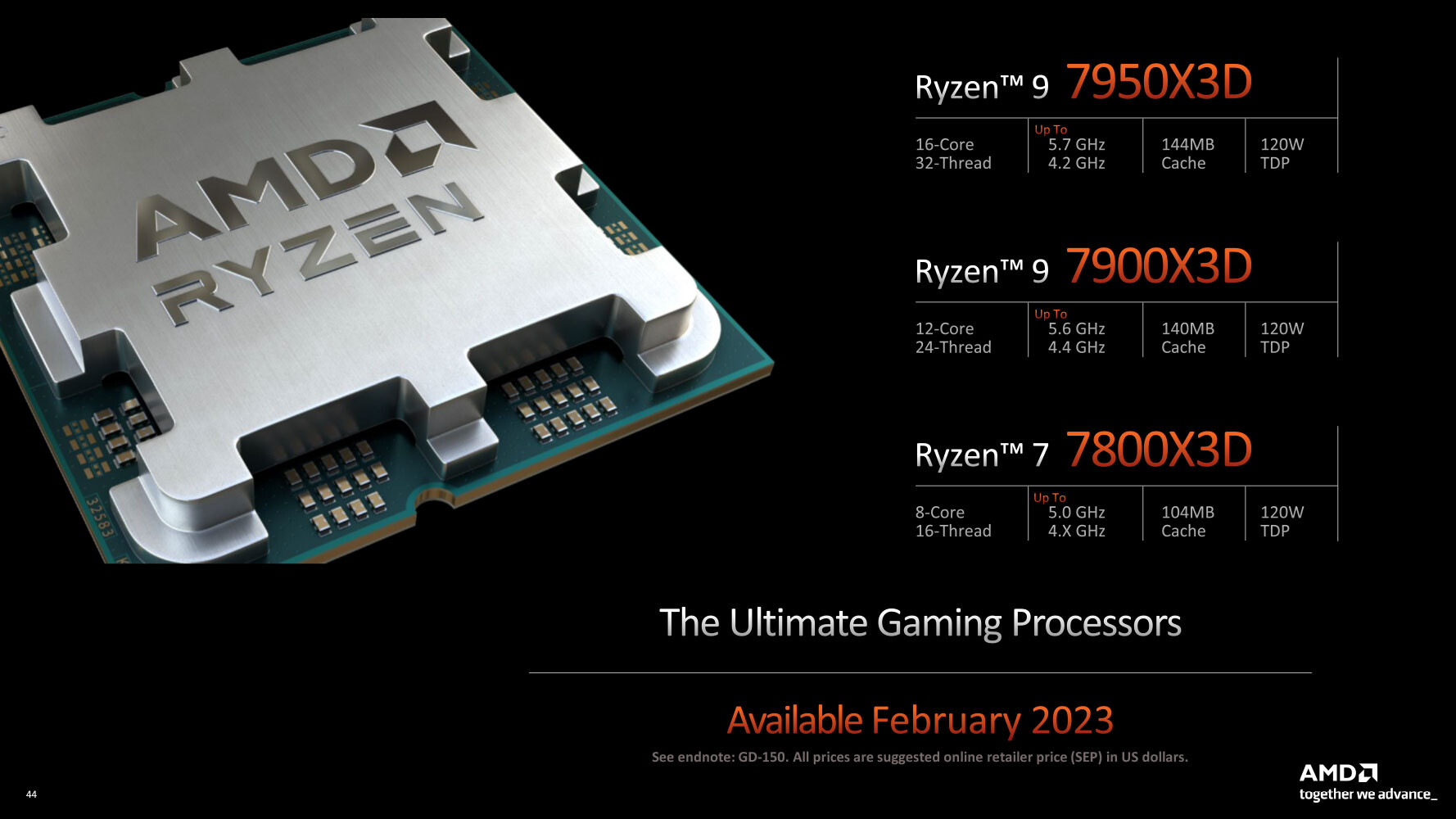AMD Confirms Ryzen 9 7950X3D and 7900X3D Feature 3DV Cache on Only One of the Two Chiplets

In our older article, we explored two possibilities—one that the 3DV cache is available on both CCDs but halved in size for whatever reason; and the second more outlandish possibility that only one of the two CCDs has stacked 3DV cache, while the other is a normal planar CCD with just the on-die 32 MB L3 cache. As it turns out, the latter theory is right! AMD put out high-resolution renders of the dual-CCD 7000X3D processors, where only one of the two CCDs is shown having the L3D (L3 cache die) stacked on top. Even real-world pictures of the older “Zen 3” 3DV cache CCDs from the 5800X3D or EPYC “Milan-X” processors show CCDs with 3DV caches having a distinct appearance with dividing lines between the L3D and the structural substrates over the regions of the CCD that have the CPU cores. In these renders, we see these lines drawn on only one of the two CCDs.
It shouldn’t be hard for such an asymmetric cache setup to work in the real world from a software perspective, given that we are now firmly in the era of hybrid-core processors thanks to Intel and Arm. Even way before “Alder Lake,” when AMD started shipping dual-CCD client processors with the Ryzen 3000 “Matisse” based on “Zen 2,” the company closely collaborated with Microsoft to optimize OS scheduling such that high-performance and less-parallelized workloads such as games, are localized to just one of the two CCDs, to minimize DDR4 memory roundtrips.
Even before “Matisse,” AMD and Microsoft confronted multi-threaded workload optimization challenges with dual-CCX architectures such as “Zen” and “Zen 2,” where the OS scheduler would ideally want to localize gaming workload to a single CCX before saturating both CCXs on a single CCD, and then onward to the next CCD. This is achieved using methods such as CPPC2 preferred-core flagging, and which is why AMD highly recommends you to use their “Ryzen Balanced” Windows power-plan included with their Chipset drivers.
We predict that something similar is happening with the 12-core and 16-core 7000X3D processors—where gaming workloads can benefit from being localized to the 3DV cache-enabled CCD, and any spillover workloads (such as audio stack, network stack, background services, etc) are handled by the second CCD. In non-gaming workloads that scale across all 16 cores, the processor works like any other multi-core chip, it’s just that the cores in the 3DV-enabled CCD have better performance from the larger victim cache. There shouldn’t be any runtime errors arising from ISA mismatch, as the CPU core types on both CCDs are the same “Zen 4.”











